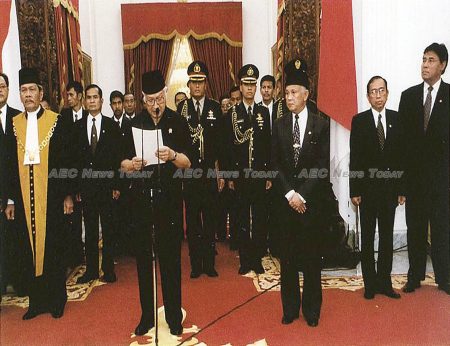In 1996 Southeast Asia was celebrating its ‘economic miracle’ as the World Bank (WB) lauded the region’s spectacular growth. Tackling middle income challenges was the focus of an IMF–Asean conference in Jakarta. The mood was ebullient. Less than a year later on July 2, 1997, Thailand floated the baht, triggering the Asian financial crisis, known locally as the Tom Yum Goong Crisis.
In Indonesia, the rupiah lost 85 per cent of its value, GDP fell by almost 15 per cent and the banking crisis became the most expensive in history, costing over 50 per cent of GDP. And this simple accounting does not capture the human costs of the crisis.
After decades of economic success it was not surprising that denial, the first stage of grief, persisted for months. But by 1998 the scale and severity of the Asian financial crisis was clear. An Australian National University (ANU) conference was aptly headlined ‘East Asia in Crisis: From Being a Miracle to Needing One!’.
For Indonesia, the road to recovery would be a challenging journey, lasting from 1997 until 2003. For the two-thirds of Indonesia’s current population who were not yet born or who were still children in 1997, much of what is ‘remembered’ today is folklore. Yet the crisis still resonates.
The Asian financial crisis triggered the collapse of political and economic institutions that had delivered remarkable growth for 30 years. Rebuilding these institutions and a sound economic framework — albeit redesigned for a middle-income democracy — remains a challenge today.
The recovery of states across Asia following the Asian financial crisis was shaped by the maturity of their political institutions. All countries affected experienced political change in one form or another.
For many, political change provided a mandate for difficult economic reforms. For Indonesia, political change meant a mandate to build democracy. The end of the Suharto regime signalled the end of political legitimacy based on delivering high growth.
Dramatic Decentralization of Political & Fiscal Power
Economic reform was subsidiary to building a new democracy. Indonesia’s economic reform program was almost entirely off track for the duration of the 1999–2001 Gus Dur administration. The economy suffered and, in 2001, Indonesia was on the edge of crisis once again.
Only after the impeachment of Gus Dur and the arrival of the Megawati Sukarnoputri administration did economic recovery begin to take shape.
The Asian financial crisis and changing political institutions — including a dramatic decentralisation of political and fiscal power — meant that the existing economic institutions had become redundant, if not damaged irreparably by the crisis.

Under Suharto, economic policy was driven by a small group of key ministers and highly capable policymakers. The civil service was designed to implement, not develop these policies and its structure was organised along military lines.
Political and economic reforms over the seven years of the Asian financial crisis were grafted onto this existing structure. With the economy in free-fall there was no scope to think about a new system, let alone create one. But Indonesia’s centralized economic decision making did begin to diffuse to a broad range of players.
Some temporary agencies were set up to help deliver reforms. The Indonesia Bank Restructuring Agency (IBRA) was established to bypass the central bank and to enable a more business-oriented approach to bank restructuring.
A new commercial debt restructuring task force (JITF) was also implemented to act as a facilitator and mediator between creditors and debtors. But these agencies had mixed success.
A Lasting Legacy
Indonesia also tried to work around the old system by setting up new permanent agencies. It established the Corruption Eradication Commission, an anti-monopoly agency (KPPU) and the Commercial Court, among others. But these agencies have, to varying degrees, struggled and have not been able to set Indonesia in a new direction.
Indonesia enacted legislation on state finance, the treasury and audit processes, designed to be the foundation of the new economy. These were important steps forward. But the effective implementation of these laws remains on the agenda today.
The Asian financial crisis has left a lasting legacy on a range of economic policies.
For macroeconomic policy, fears still linger that if the rupiah weakens it may repeat a crisis-like free-fall. But a weaker rupiah, along with lower interest rates, would have actually supported growth and job creation at various points in time since the Asian financial crisis.
Likewise, the memory of the near 100 per cent debt-to-GDP ratio during the Asian financial crisis has at times fueled undue concern about relatively modest public debt and led the government to be overly stringent in tightening fiscal policy.
In terms of infrastructure, no effective replacement for the Suharto-era system has been developed.
Under Suharto the balanced budget fiscal rule meant that the capital budget was fully funded by development agencies. These agencies worked with Bappenas — Indonesia’s planning agency — to develop and fund infrastructure projects. The fiscal rule was abandoned during the Asian financial crisis and donor funding diverted to broad budget support. The previous capacity to deliver infrastructure was lost and efforts to replace it continue.
In the financial sector, the massive use of public money in resolving the banking crisis sparked some poorly justified legal action against public officials.
There are concerns that this has developed a risk-averse culture that will prevent officials from taking necessary actions to prevent a banking crisis in the future. The law dealing with banking crises, passed in 2016, is a step forward.
Twenty years on, Indonesia’s institutions of economic governance are still overcoming the legacy of the Asian financial crisis. Robust economic institutions may not always prevent crises. But they can increase a country’s resilience to them. Hopefully Indonesia’s institutions will be up to the task of preventing a repeat of the terrible costs inflicted by the Asian financial crisis.
Feature photo Yohanes Budiyanto
This article was written by David Nellor who was based in Asia for the IMF throughout the crisis and led the IMF Jakarta office over the last few years of the crisis. It first appeared on East Asia Forum under a Creative Commons License and is produced here with its permission.
Related:
- Malaysians most pessimistic among Asean-5 (Nikkei Asian Review)
- More reforms needed, but will Jokowi take the risk? The Jakarta Post columnist (The Straits Times)
- Successful taming of ringgit and rupiah volatility creates new danger (The Star Online)
East Asia Forum
It consists of an online publication and a quarterly magazine, East Asia Forum Quarterly, which aim to provide clear and original analysis from the leading minds in the region and beyond.
Latest posts by East Asia Forum (see all)
- China’s South China Sea bullying seeing increased blowback from Asean claimants – February 2, 2022
- Illusionary, delusionary or visionary? Cambodia tests living with COVID-19 – December 6, 2021
- Prioritising a Philippine–EU FTA is vital for post-pandemic recovery – July 26, 2020
- Time for Asean to stand up for itself in the South China Sea – July 25, 2020


